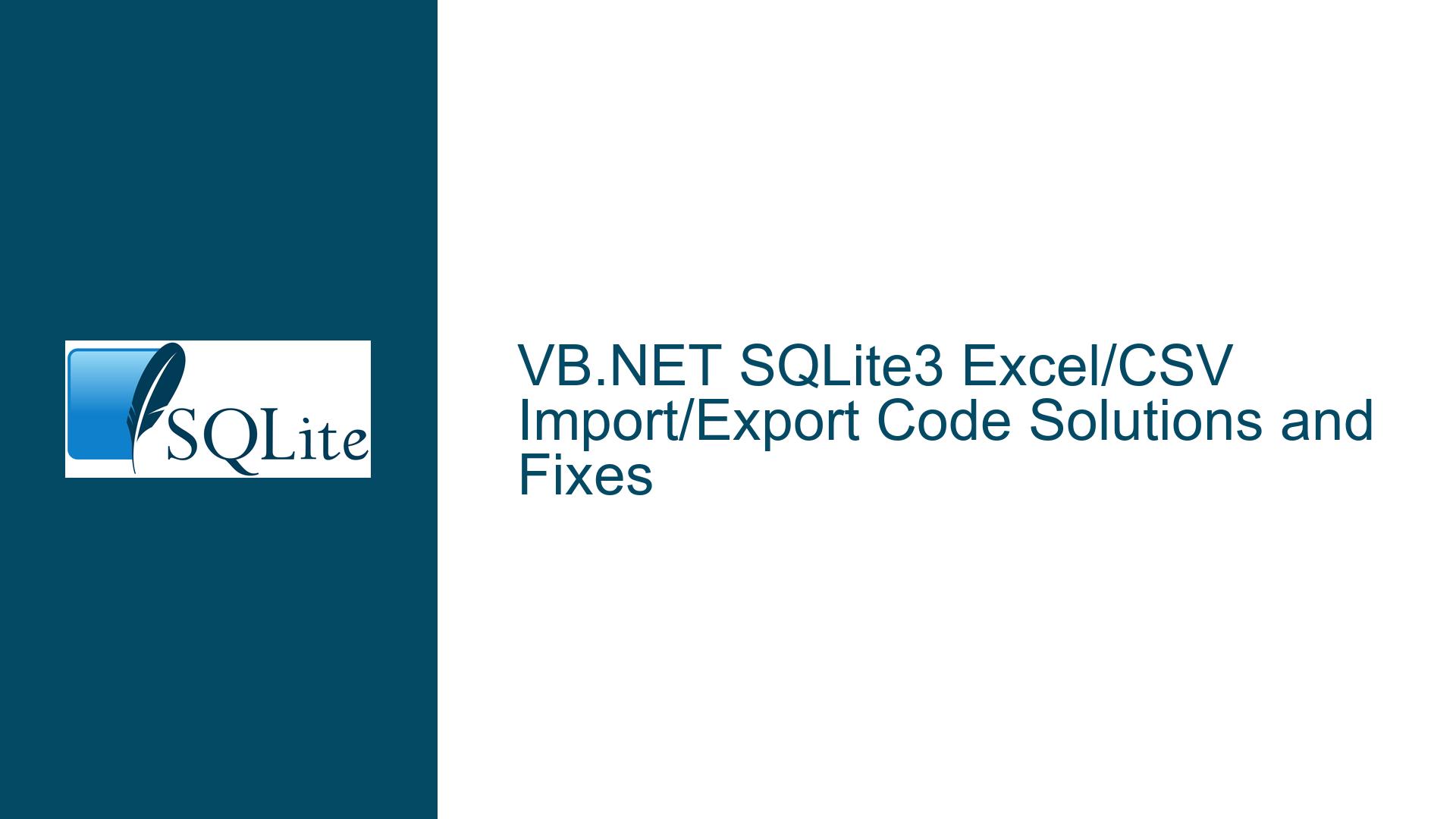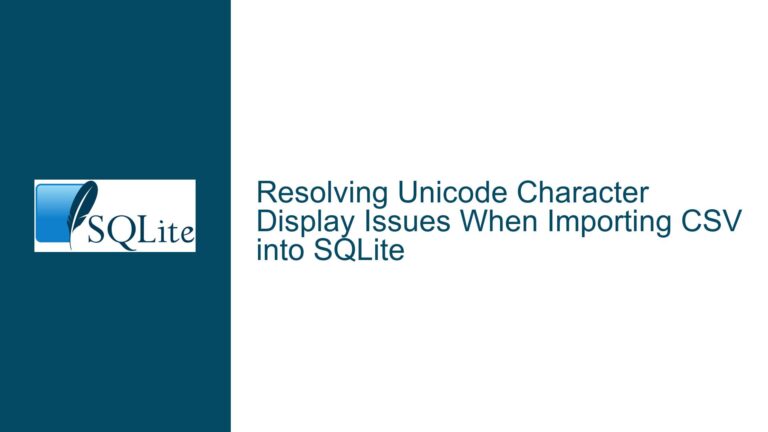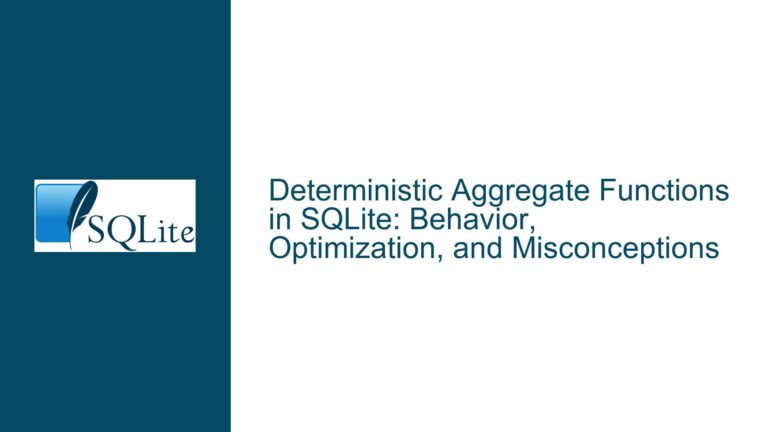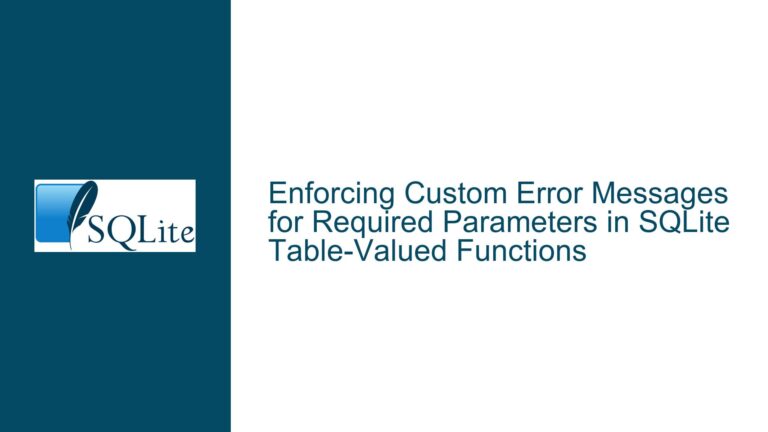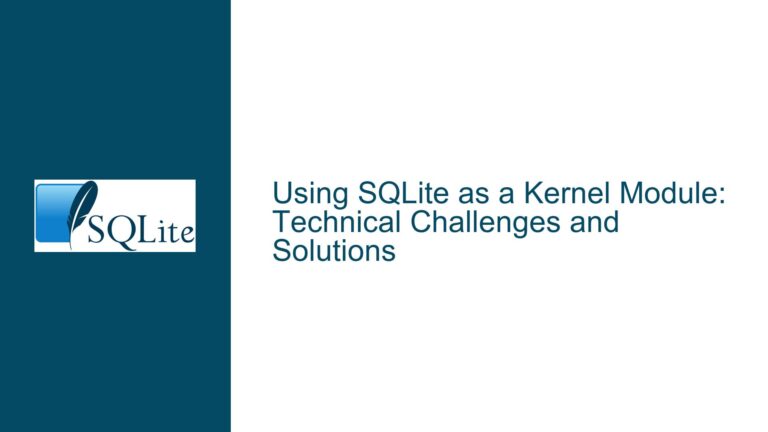VB.NET SQLite3 Excel/CSV Import/Export Code Solutions and Fixes
Challenges in Implementing SQLite3 Data Transfer with Excel/CSV via VB.NET
The process of transferring data between SQLite3 databases and Excel/CSV files using VB.NET involves multiple layers of complexity. Developers often face challenges due to SQLite’s lack of native support for direct integration with Excel or CSV formats within the .NET ecosystem. While SQLite provides a lightweight, serverless database solution, it does not include built-in tools for parsing Excel files or handling CSV files that adhere to standards such as RFC 4180. VB.NET developers must bridge this gap by leveraging external libraries, interoperability techniques, or manual implementations to achieve reliable import/export functionality. Common roadblocks include mismatched data types between Excel and SQLite, improper handling of CSV quoting and escaping rules, and performance bottlenecks when processing large datasets.
The absence of pre-packaged VB.NET code for these operations exacerbates the problem, forcing developers to either adapt existing C-based solutions, rely on third-party libraries, or utilize Windows-specific technologies like COM automation. Each approach carries trade-offs in terms of code maintainability, dependency management, and compatibility across environments. For instance, using COM objects to interface with Excel introduces versioning issues and requires Excel to be installed on the target machine, while translating C code to VB.NET demands a deep understanding of both languages’ memory management and API conventions.
Root Causes of Integration Hurdles Between VB.NET, SQLite3, and Excel/CSV
The primary obstacle stems from SQLite3’s design philosophy as a self-contained, minimal-dependency database engine. Unlike client-server databases that often include connectors for various file formats, SQLite3 delegates file parsing responsibilities to the host application. In the context of VB.NET, this means developers must implement their own mechanisms to read Excel files (which use a proprietary binary format or OpenXML structure) and parse CSV files (which may contain nested quotes, line breaks, or inconsistent delimiters).
Another critical factor is the disparity between Excel’s data representation and SQLite’s type system. Excel cells can store formatted dates, currency values, and formulas, whereas SQLite employs dynamic typing with storage classes such as INTEGER, REAL, TEXT, and BLOB. Converting Excel data to SQLite requires explicit type mapping and validation to prevent data corruption. For example, an Excel column containing mixed numeric and text values may inadvertently be classified as TEXT in SQLite, leading to query errors if the application expects numeric operations.
CSV files present their own challenges due to the lack of a universal standard. Although RFC 4180 specifies rules for handling quoted fields, escaped characters, and line breaks, many CSV files deviate from these guidelines. Parsing such files in VB.NET without a robust library can result in incomplete data imports or malformed records. Additionally, writing CSV files from SQLite3 tables necessitates careful handling of delimiters and encoding to ensure compatibility with downstream applications.
The reliance on Windows-specific technologies like COM automation for Excel interaction introduces platform limitations and scalability concerns. COM objects require Excel to be installed on the server or client machine, making this approach unsuitable for cloud-based or cross-platform applications. Furthermore, COM interop in VB.NET can lead to resource leaks if Excel processes are not properly terminated, causing memory bloat or hanging instances in long-running applications.
Strategies for Building Robust Excel/CSV-to-SQLite3 Import/Export in VB.NET
Approach 1: Translating SQLite’s C-Based CSV Importer to VB.NET
SQLite’s public domain C code for CSV parsing provides a solid foundation for developers willing to adapt it to VB.NET. The sqlite3_csv module implements RFC 4180-compliant parsing, handling quoted fields, embedded line breaks, and escaped characters. To integrate this into a VB.NET project:
Leverage Platform Invocation Services (P/Invoke):
Expose the C functions to VB.NET by declaring them withDllImport. For example:Imports System.Runtime.InteropServices Public Module SQLiteCSV <DllImport("sqlite3_csv", CallingConvention:=CallingConvention.Cdecl)> Public Function sqlite3_csv_open(ByVal filename As String, ByVal mode As Integer, ByRef handle As IntPtr) As Integer End Function End ModuleThis requires compiling the C code into a DLL accessible to the VB.NET application.
Implement a Managed Wrapper:
Create a VB.NET class that encapsulates the P/Invoke calls and handles memory management. For instance:Public Class CSVReader Private _handle As IntPtr Public Sub New(ByVal filePath As String) Dim result As Integer = SQLiteCSV.sqlite3_csv_open(filePath, 0, _handle) If result <> 0 Then Throw New IOException("Failed to open CSV file.") End If End Sub Public Function ReadNextRow() As String() ' Use marshaling to read data from the C struct End Function End ClassBatch Insertion into SQLite3:
Use parameterized SQLite commands to insert parsed CSV data efficiently. Leverage transactions to minimize disk I/O:Using connection As New SQLiteConnection("Data Source=mydb.sqlite") connection.Open() Using transaction As SQLiteTransaction = connection.BeginTransaction() Using cmd As New SQLiteCommand("INSERT INTO mytable (col1, col2) VALUES (?, ?)", connection) cmd.Parameters.Add("col1", DbType.String) cmd.Parameters.Add("col2", DbType.Integer) Dim csvReader As New CSVReader("data.csv") Dim row As String() While (row = csvReader.ReadNextRow()) IsNot Nothing cmd.Parameters(0).Value = row(0) cmd.Parameters(1).Value = Integer.Parse(row(1)) cmd.ExecuteNonQuery() End While End Using transaction.Commit() End Using End Using
Advantages:
- RFC 4180 compliance ensures compatibility with most CSV files.
- High performance for large datasets due to native code execution.
Drawbacks:
- Requires C compilation and interop expertise.
- Maintenance overhead when updating the C library.
Approach 2: Excel Integration via COM Automation
For applications requiring Excel file support, COM automation provides direct access to Excel’s object model. This method is suitable for environments where Excel is installed and licensing permits automation.
Reference Excel Interop Libraries:
Add a reference toMicrosoft.Office.Interop.Excelvia NuGet or COM tab in Visual Studio.Read Excel Data:
Imports Microsoft.Office.Interop.Excel Public Function ReadExcelFile(ByVal path As String) As DataTable Dim excelApp As New Application() excelApp.Visible = False Dim workbook As Workbook = excelApp.Workbooks.Open(path) Dim worksheet As Worksheet = workbook.Sheets(1) Dim range As Range = worksheet.UsedRange Dim dt As New DataTable() For col As Integer = 1 To range.Columns.Count dt.Columns.Add(CStr(range.Cells(1, col).Value2)) Next For row As Integer = 2 To range.Rows.Count Dim dr As DataRow = dt.NewRow() For col As Integer = 1 To range.Columns.Count dr(col - 1) = range.Cells(row, col).Value2 Next dt.Rows.Add(dr) Next workbook.Close() excelApp.Quit() Marshal.ReleaseComObject(range) Marshal.ReleaseComObject(worksheet) Marshal.ReleaseComObject(workbook) Marshal.ReleaseComObject(excelApp) Return dt End FunctionWrite to SQLite3:
Convert theDataTableto parameterized INSERT commands as shown in Approach 1.
Advantages:
- Full access to Excel features like formulas and formatting.
- No third-party dependencies beyond Excel.
Drawbacks:
- Excel must be installed on the host machine.
- COM objects may leak memory if not properly released.
Approach 3: Third-Party Libraries for Excel and CSV
Libraries like EPPlus (for Excel) and CsvHelper (for CSV) simplify file handling in VB.NET without external dependencies.
EPPlus for Excel:
Imports OfficeOpenXml Public Function ReadExcelWithEPPlus(ByVal path As String) As DataTable Using package As New ExcelPackage(New FileInfo(path)) Dim worksheet As ExcelWorksheet = package.Workbook.Worksheets(0) Dim dt As New DataTable() For col As Integer = 1 To worksheet.Dimension.End.Column dt.Columns.Add(worksheet.Cells(1, col).Text) Next For row As Integer = 2 To worksheet.Dimension.End.Row Dim dr As DataRow = dt.NewRow() For col As Integer = 1 To worksheet.Dimension.End.Column dr(col - 1) = worksheet.Cells(row, col).Text Next dt.Rows.Add(dr) Next Return dt End Using End FunctionCsvHelper for CSV:
Imports CsvHelper Public Function ReadCsvWithCsvHelper(ByVal path As String) As DataTable Using reader As New StreamReader(path) Using csv As New CsvReader(reader, CultureInfo.InvariantCulture) Dim dt As New DataTable() csv.Read() csv.ReadHeader() For Each header As String In csv.HeaderRecord dt.Columns.Add(header) Next While csv.Read() Dim dr As DataRow = dt.NewRow() For Each header As String In csv.HeaderRecord dr(header) = csv.GetField(header) Next dt.Rows.Add(dr) End While Return dt End Using End Using End Function
Advantages:
- No dependency on Excel installation.
- Actively maintained libraries with robust error handling.
Drawbacks:
- Licensing considerations for third-party code.
- Learning curve for library-specific APIs.
Performance Optimization Techniques
- Bulk Insertions: Use
INSERT INTO ... VALUES (?, ?), (?, ?), ...syntax to insert multiple rows in a single command. - Transaction Batching: Commit transactions after every 1,000–10,000 rows to balance memory usage and performance.
- Parallel Processing: For large Excel files, read sheets or ranges in parallel threads while ensuring thread-safe SQLite access.
Error Handling and Validation
- Data Type Mismatches: Use
TryParsemethods to validate numeric and date values before insertion. - CSV Encoding Issues: Specify the correct encoding (e.g., UTF-8, ANSI) when reading files.
- Excel Cell Errors: Check for
ErrorValuein Excel cells and handle them as NULL or custom placeholders.
By combining these strategies, VB.NET developers can build reliable, high-performance solutions for SQLite3 data interchange with Excel and CSV files, addressing both common pitfalls and edge cases inherent in these formats.
